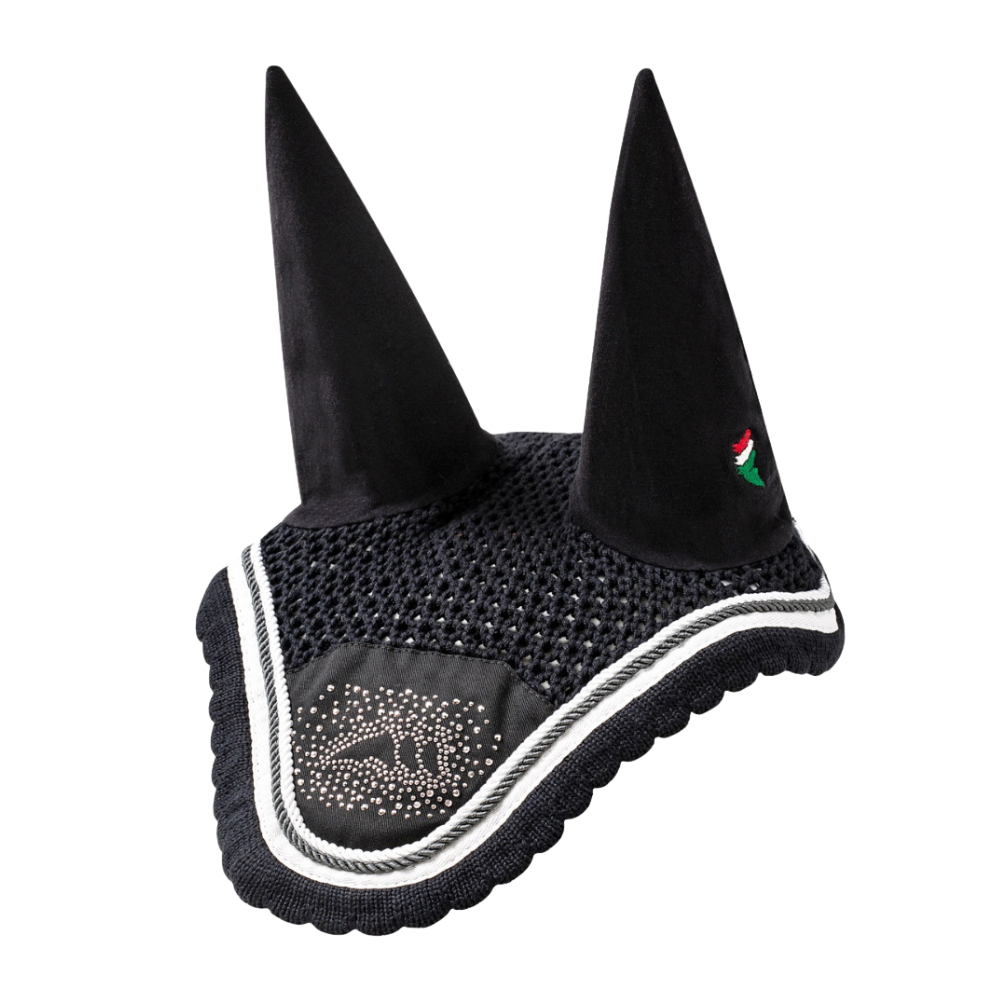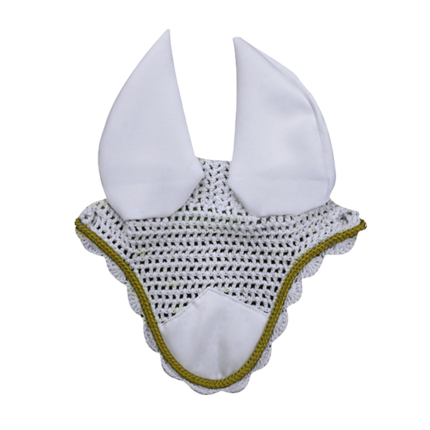Ear nets, also known as fly hoods or ear bonnets, are accessories commonly used in equestrian sports and horse riding. They serve several practical and aesthetic purposes, and their design can vary based on these functions. Here’s a detailed description of ear nets:
Functionality
- Protection from Insects: One of the primary purposes of ear nets is to protect the horse’s ears from flies and other insects. This is particularly important during the warmer months when bugs are more prevalent and can be a significant distraction or irritation to the horse.
- Noise Reduction: Some ear nets are designed with materials that help muffle sounds, reducing the noise level for the horse. This can be beneficial in noisy environments, such as competitions or parades, helping to keep the horse calm and focused.
- Sun Protection: Certain ear nets provide a level of sun protection, shielding the horse’s sensitive ears from harsh sunlight.
- Decorative and Identification: Ear nets often come in various colors and designs, allowing riders to coordinate with their competition outfits or team colors. They can also help in identifying horses in a group setting.
Design and Material
- Fabric: Ear nets are typically made from lightweight, breathable fabrics such as cotton, polyester, or a blend. The material should be comfortable for the horse and not cause any irritation.
- Structure: The basic design includes two ear covers connected by a piece that rests on the horse’s forehead. Some ear nets extend down to cover part of the horse’s face and head.
- Attachment: They are usually secured under the bridle, ensuring they stay in place during movement. Some models might have additional straps or Velcro to ensure a snug fit.
- Customization: Many ear nets feature intricate designs, embroidery, or embellishments such as crystals or metallic threads. Riders often choose designs that match their tack and attire.
Types of Ear Nets
- Standard Ear Nets: These are basic models designed primarily for fly protection, with no additional noise-canceling features.
- Soundproof Ear Nets: These are made with thicker or special sound-absorbing materials to help reduce noise levels.
- Fringe Ear Nets: In addition to ear covers, these may have a fringe that hangs over the horse’s eyes to help deter flies without obstructing vision.
Usage
- Everyday Riding: Used during daily rides to keep the horse comfortable and focused by reducing fly annoyance.
- Competitions and Shows: Often used to present a polished, coordinated look while also serving practical purposes. In some disciplines, soundproof ear nets are allowed to help horses concentrate.
- Trail Riding: Particularly useful in wooded or buggy areas where insects are prevalent.









Reviews
There are no reviews yet.